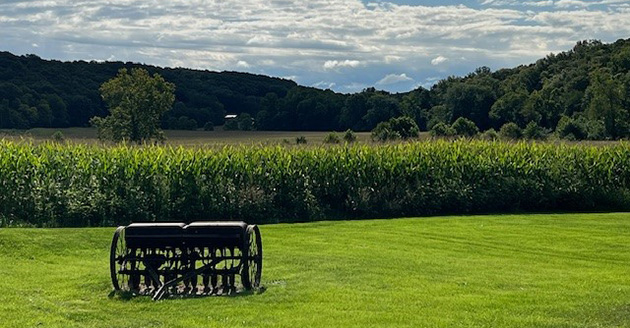Over Spring Break, members of the FNR 53600 Ecology of Disturbance course headed to the Great Smoky Mountains to experience lessons from their class first hand from natural resource professionals who live it every day.
The course, taught by Dr. Mike Jenkins and Dr. Mike Saunders, aims to teach students about how disturbance shapes the composition and structure of communities and landscapes across major terrestrial biomes, while also discussing how these disturbances affect ecologically-based management of forest and grassland ecosystems.
The four-day trip involved hikes to see disturbance sites firsthand, meetings with National Park Service employees to learn about monitoring and management techniques.
On Day 1, students hiked up the Bullhead Trail to view the effects of the 2016 Chimney Tops 2 wildfire. They then met Rob Klein, Southeast Region Fire Ecologist for the National Park Service, for a discussion about the fire regime of the southern Appalachian Mountains and the reproduction of Table Mountain Pine, which is only found in the region.
"On our first day we went on a hike to see all the areas burned by the Great Smoky Fires in 2016," master's degree student Gabriela Krochmal said. "As we walked, we were able to see the burn damage and charred trees as well as what seemed like endless pine regeneration. It was an amazing learning experience to physically see everything we learned about over PowerPoints earlier in the semester. This was a huge learning experience for me because I was able to bridge the gap from concepts I learned in class to the real world.

Day 2 took the group to visit Cades Cover to view grassland, forest and canebrake restoration efforts and also to see deer exclosures in order to assess the effects of overabundant deer. In the afternoon, a visit to Twin Creeks Science and Education Center allowed students to view natural history collections. The day also included time with Dr. Becky Nichols, Park Entomologist for Great Smoky Mountains National Park. Nichols shared about stream monitoring and collecting aquatic macroinvertebrates in the field.

Day 3 included a hike to Albright Grove on the Maddron Bald Trail to view old-growth forest. The group also met with Troy Evans, Park Vegetation Ecologist, to discuss park disturbance history, stand development and efforts to control hemlock woolly adelgid with chemical and biocontrol treatments.
"I learned so much on the trip," master's degree student Elias Gaffney said. "To focus on one small portion of what we discussed and saw, it was interesting to hear about the complexities of managing the hemlock wooly adelgid. This invasive insect is detrimental to hemlock trees. Because the insect reproduces asexually (a process known as parthenogenesis), and because systemic insecticides have potential detrimental impacts on other insects utilizing hemlock trees, treating this invasive species gets tricky!"

On Day 4, the group hiked up the Alum Cave Trail to the summit of Mount Le Conte, where they viewed and discussed the history of and threats to spruce-fir forests in the southern Appalachian such as balsam woolly adelgid and acid deposition. After enjoying the view from Clifftops, the group hiked down Trillium Gap Trail. Along the way, they visited beech gaps to discuss beech bark disease, and visited a healthy bald to discuss the mystery surrounding their origin, before finishing the hike with a visit to beautiful Grotto Falls.
"Spending the time we did in the Smokies, I was able to learn a lot about the difficulty of managing such an environmentally diverse place when you are facing issues of public use, pollution, and so much more," master's degree student Cameron Wingren said. "I developed a newfound and great appreciation for the park service employees conducting such important and difficult work given the often lack of time and resources devoted to keeping such an amazing park healthy."

Students bunked together and ate meals together in addition to hiking and learning in the field.
"My favorite part of this trip was learning from each other," Krochmal said. "It was so cool to be a part of a diverse group of students with different interests whether it be salamanders, trees, wildflowers, animals and birds. It was awesome to learn from everyone as we hiked through the mountains because we each had our own special interest to be excited about and got to share that excitement with the whole group.
Wingren enjoyed the experiences with his classmates.
"My favorite experience of the trip was the social time spent around the campfire and picnic tables, talking about everything ranging from what we learned that day to what we were eating for dinner," he recalled.
Gaffney learned about himself through the perseverance required by the final hike.
"My favorite part of the trip was hiking up Mount LeConte," he said. "It was certainly a tough hike, but the forest and the views from the top of the mountain were absolutely beautiful. It also felt good to overcome a physical challenge of that magnitude."
The Ecology of Disturbance course is offered in spring semesters of even-numbered years. Jenkins and Saunders have taken the class on a trip to the Smoky Mountains since 2010.





